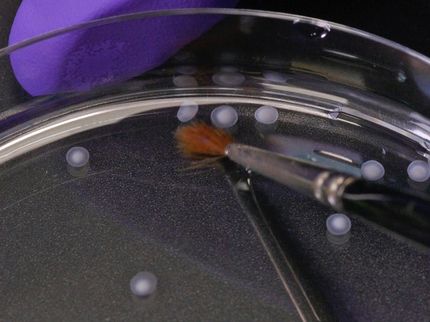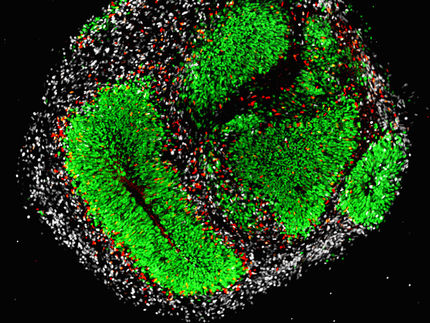UF scientists devise way to sort brain cell cells for potential transplants
University of Florida scientists have discovered a way to separate the neural wheat from the chaff during the process of generating brain cells for potential patient therapies.
The technique, recently detailed in PLoS ONE, could be applied to long-awaited stem cell treatments for Parkinson’s disease, spinal cord injuries and other brain disorders. It would allow doctors to deliver neurons to patients, without including vast amounts of other types of unnecessary brain cells.
“We need to be able to deliver precise doses of our therapeutic drug, which in this case is neurons that are needed to restore function lost as a result of disease or injury,” said Brent A. Reynolds, Ph.D., a professor of neurosurgery with UF’s Evelyn F. and William L. McKnight Brain Institute. “Prior to the development of our technology, it was not possible to deliver highly pure populations of neurons, or to control the number of neurons that were delivered.”
For more than a decade, scientists and policymakers have pursued the idea of using stem cells to restore vitality in patients with brain diseases or injuries. The therapeutic stem cells can come from a variety of sources, including controversial embryonic and fetal tissue or, in this application, noncontroversial adult brain tissue.
Youthful or immature cells, neural stem cells have the ability to survive and integrate into the nervous system, but they haven’t fully settled on their roles yet. Most of them will become glial cells, not the more highly valued neurons.
Experimenting with neural stem cells from rodents, UF researchers and colleagues from the Queensland Brain Institute in Australia were able to generate hearty, immature cells fully committed to becoming neurons. The accomplishment suggests it will be possible to provide unlimited quantities of neurons from a safe, renewable source of cells for replacement therapies in the central nervous system.
UF researchers found that size really makes a difference when it comes to isolating the different cell types.
After noticing neurons are small and appear in clusters that rest on top of a layer of other, larger brain cells, researchers turned to a technique for counting and separating cells that is used in laboratories across the world called flow cytometry.
By suspending neural stem cell-progeny, or offspring, in a tissue culture medium and running it through the cytometer, UF researchers were able to efficiently select and separate the neurons from the other, less desirable brain cells, solely based on their unique size and internal composition.
“This is a simple, effective approach that other people have not yet taken to generate highly enriched or relatively pure populations of cells from renewable cell sources,” said Hassan Azari, Ph.D., a postdoctoral research associate of neurosurgery at UF. “You set the parameters for cell size and internal characteristics, and you can easily sort two different cell populations. Using this technology, we can isolate large quantities of purified neurons to use as a donor source for cell replacement strategies to treat disorders such as Huntington’s disease, spinal cord injury, Parkinson’s disease — many different problems.”
Transplantation therapies using neural stem cells are finally moving into clinical trials, with about a half dozen groups around the world testing them for safety and efficiency, Reynolds said.
“When looking for efficacy, the ability to control the dose of the drug, which in this case is the number of neurons, cannot be understated,” Reynolds said. “By purifying these cell populations, we can control the dose that we give. We can also ask questions in laboratory models to determine what dose is most effective.
“Whether it is going to work is yet to be seen,” Reynolds said. “I think this technology is going to increase the chances or probability that transplantation will show efficacy. Our hope for this technology is it will contribute to the success of neural transplantation as a valid approach to repair the injured brain.”




















































